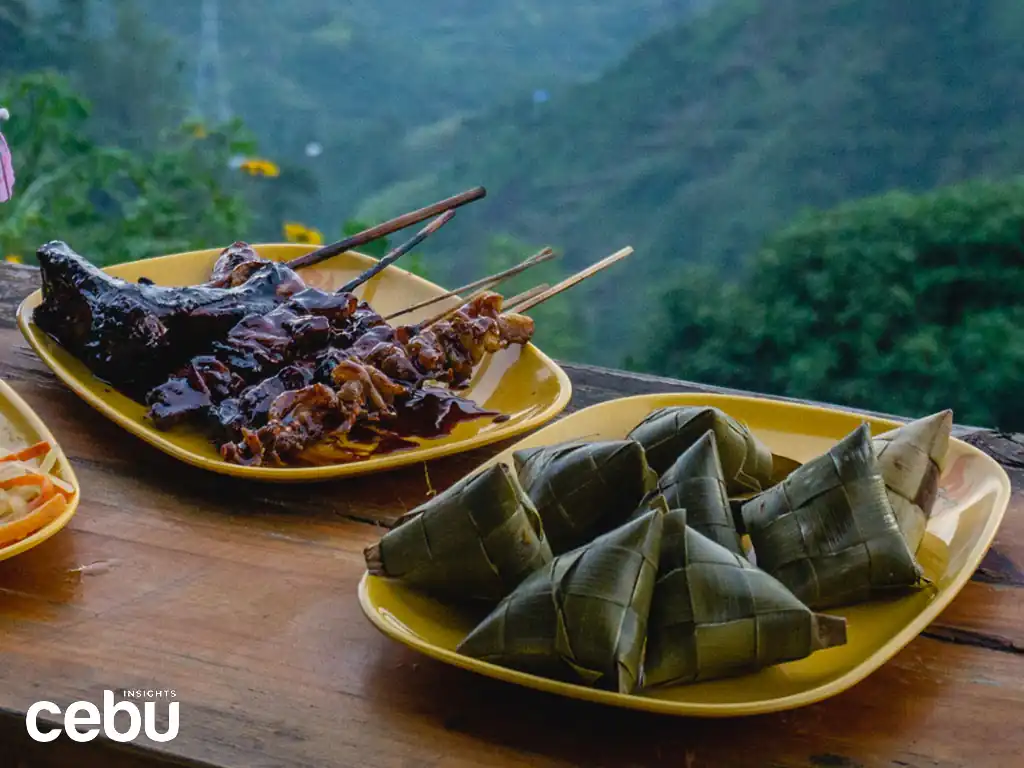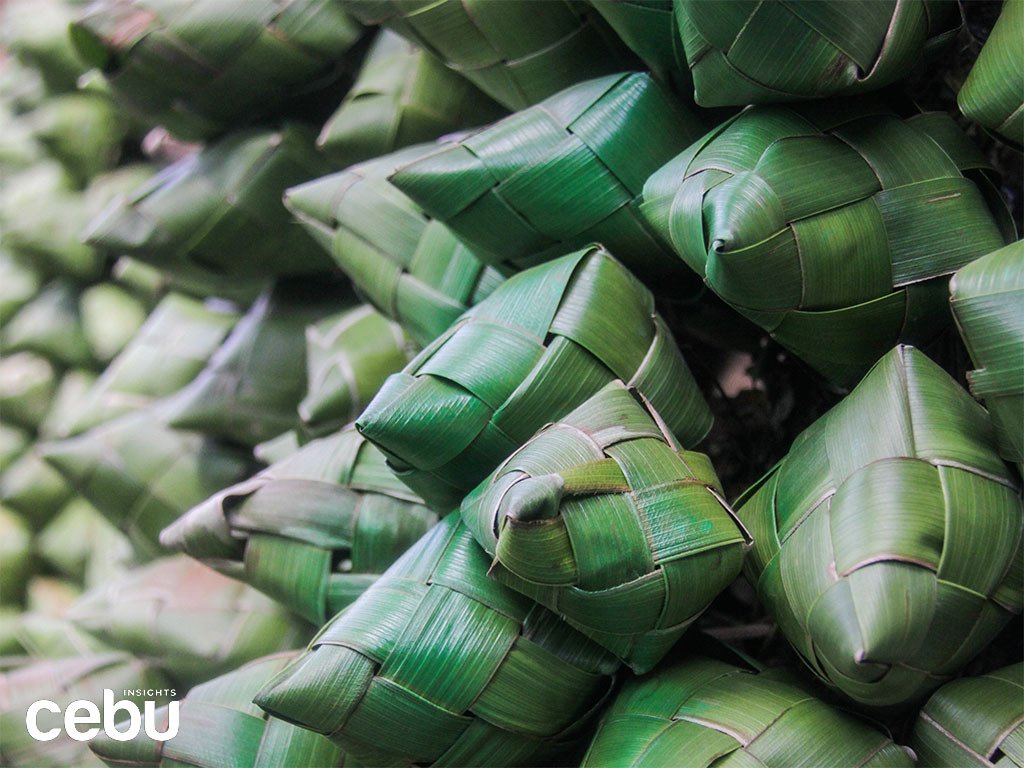Puso is a famous delicacy that Cebuanos love to pair with various Filipino dishes.
Many Cebu street food stalls and small-scale eateries are known for selling the famous puso. This diamond-shaped delicacy is the go-to choice to pair with any pork, beef, chicken, or seafood dish, thanks to its affordable price and value.
This is made by putting rice inside a pouch made of coconut fronds locally called “lukay.” Then it is steamed until cooked. As it cooks, the rice takes the shape of the pouch, forming a solid chunk you can eat easily with your bare hands.
The final product is then hung and cut off when customers are ready to eat. This is where the name “hanging rice” comes from.
Because of how simple and easy it is to eat, it has become a popular choice in many street-side eateries, where it is paired with a variety of Cebuano dishes like Ginabot and Tuslob Buwa.
However, did you know that there’s an interesting history behind this famous delicacy?
THE HISTORICAL SIGNIFICANCE OF PUSO IN CEBU
Puso is commonly served in many street food stalls.
Puso weaving is believed to have been practiced even before the Spaniards arrived in Cebu in the 1500s. Before converting to Christianity, early Cebuanos offered pieces of hanging rice to diwatas during religious celebrations.
Hanging rice is considered “food for the gods,” spawning several rituals to give thanks, ask for better fortune, commemorate fallen ancestors, and many more.
One interesting ritual practiced was during the collection of Tuba. Locals offer pieces of puso to the gods near the trees right before extracting their sap to ferment and create the alcoholic beverage known as Tuba.
Other rituals consisted of prayers for deceased relatives to protect the living, praying for a good harvest, and in some extreme cases, driving away demons.
Weaving lukay even became an important art form in the Cebuano community, with early Cebuanas being taught how to make them at an early age. It also became an important dish present in many social gatherings around the island.
PUSO TODAY

Even restaurants are no strangers to the famous hanging rice.
Despite the country moving on from Paganism, puso stood the test of time and is still being sold in many places in Cebu and other parts of Visayas. But it is no longer offered to the gods for good luck or to give thanks.
Today, hundreds of puso are sold everywhere, including barbecue restaurants like Chixboy, food parks like Sugbo Mercado, and carenderias like Pungko-Pungko sa Fuente. It is the perfect budget-friendly alternative to regular rice.
Aside from its affordability, puso is also beneficial because of its compactness, which makes it easy to eat wherever you are. You can sit down, stand up, or even travel on the road, and still enjoy a hefty meal that is paired with hanging rice.
It also has a distinctive taste, thanks to the coconut fronds wrapped around the rice when cooking. You can definitely pair it with other finger foods like lumpia, ngohiong, and barbecue skewers.
You can also dip the puso into a sauce, like how you eat Tuslob Buwa.
The lightweight nature of puso makes it easier to carry around than having to bring a rice cooker on road trips to rural areas of the island.
If you don’t know where to buy hanging rice, you can definitely ask around the neighborhood since so many stalls in the city sell puso in bulk. You can even find many of them along the highway in provincial areas.
Hanging rice is an iconic piece of Philippine history, spawning many merchandises, architecture, and several other businesses inspired by it.
It’s ubiquitous around Cebu food culture, but many of us probably don’t know how puso was before its sudden rise in popularity. What started off as food for the goods has now become the go-to dish in the mortal world.
If you haven’t tried puso, you should definitely drop by the many streetside eateries and budget-friendly diners and taste this versatile Cebuano staple. You can pair it with all of your favorite dishes and enjoy eating it anytime, anywhere.








